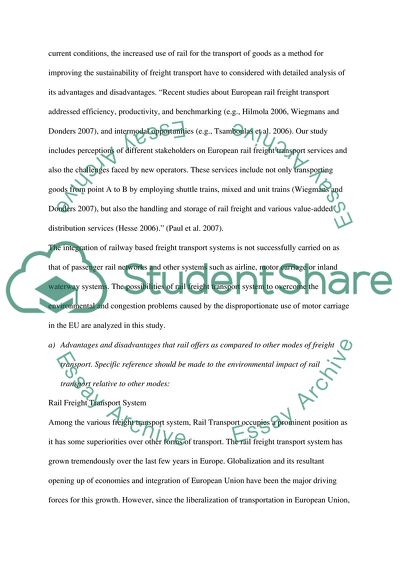Cite this document
(The Increased Use of Rail for the Transport of Goods as a Method for Term Paper, n.d.)
The Increased Use of Rail for the Transport of Goods as a Method for Term Paper. Retrieved from https://studentshare.org/technology/1719916-european-freight-transport-assessment-the-increased-use-of-rail-for-the-transport-of-goods-as-a-method-for-improving-the-sustainability-of-freight-transport
The Increased Use of Rail for the Transport of Goods as a Method for Term Paper. Retrieved from https://studentshare.org/technology/1719916-european-freight-transport-assessment-the-increased-use-of-rail-for-the-transport-of-goods-as-a-method-for-improving-the-sustainability-of-freight-transport
(The Increased Use of Rail for the Transport of Goods As a Method for Term Paper)
The Increased Use of Rail for the Transport of Goods As a Method for Term Paper. https://studentshare.org/technology/1719916-european-freight-transport-assessment-the-increased-use-of-rail-for-the-transport-of-goods-as-a-method-for-improving-the-sustainability-of-freight-transport.
The Increased Use of Rail for the Transport of Goods As a Method for Term Paper. https://studentshare.org/technology/1719916-european-freight-transport-assessment-the-increased-use-of-rail-for-the-transport-of-goods-as-a-method-for-improving-the-sustainability-of-freight-transport.
“The Increased Use of Rail for the Transport of Goods As a Method for Term Paper”, n.d. https://studentshare.org/technology/1719916-european-freight-transport-assessment-the-increased-use-of-rail-for-the-transport-of-goods-as-a-method-for-improving-the-sustainability-of-freight-transport.


